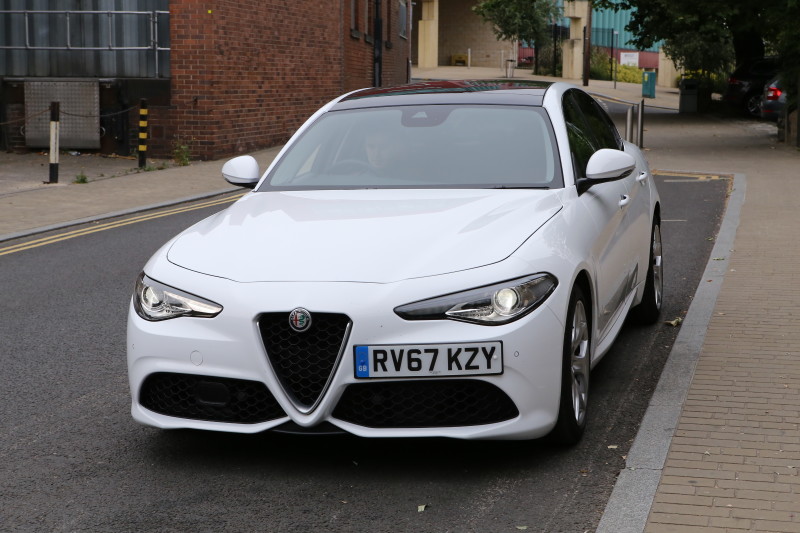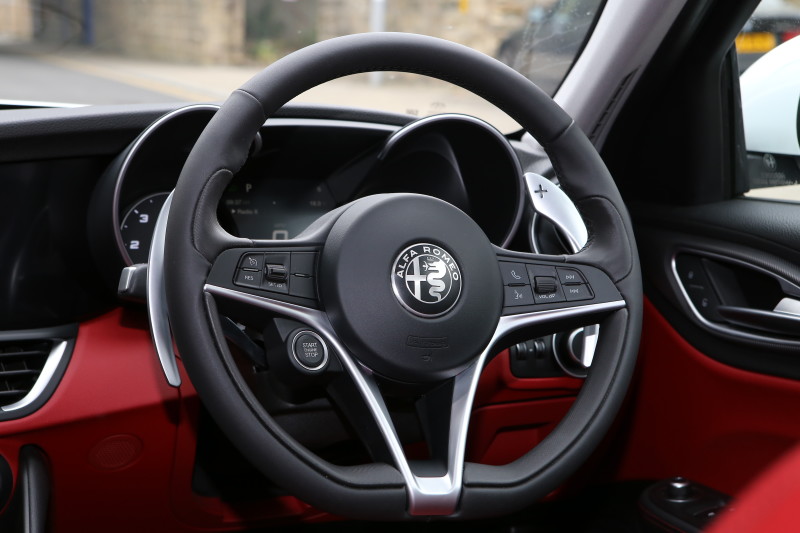THERE'S always a sense of trepidation when Alfa Romeo release a new car - and for good reason. For too long they've followed the well-trodden path of being beautiful to look at, but massively underwhelming to drive.
In my lifetime I can recall multiple occasions when I've been excited about the prospect of an Alfa that drives as good as it looks - things like the 147 GTA, 8C and 4C spring to mind. All of them were monumental let-downs; beautiful, quirky and completely different to their German rivals, but none able to claim a place as a great driver's car.
Factor in notoriously iffy electrics and their tendency to plummet in depreciation and it becomes clear why Alfas are still a rare sight on the road - anyone with an ounce of sense would stay clear.
People tend to be more lenient with them, though. No matter how much they've disappointed you, no matter how much you want to let go once and for all, they still have an uncanny knack of enticing you back. Everyone wants Alfa to do well - the perennial underachievers.
But a change has happened in the last year or so and Alfa's new range-topping four-door saloon - the Giulia Quadrifoglio - has been winning group tests against the likes of the BMW M3, Mercedes C63 AMG and Audi RS4. No longer the beautiful-but-flawed alternative, the Giulia has been a revelation for Alfa and more attainable models in non-503bhp Quadrifoglio form are now available.
While that car's performance is hard to ignore, it comes with a £60,000 price tag, but there are a series of cheaper, more frugal versions which are well worth a look at, taking the fight directly to best-selling 3-Series and A4s. Our car - in middle-level £36,000 Speciale trim - has a 2.2-litre diesel engine which produces 180bhp. Like all Giulias, it's mated to an eight-speed semi-automatic gearbox, but the Speciale gets bi-xenon headlights, sportier bumpers, bigger wheels and a rear diffuser.
You can view it as a good balance between the standard model's perhaps uninspiring spec and the Quadrifoglio's beefed-up body - it's a mixture of sportiness and elegance which no-one can surely dislike.
Its looks get it off to a great start - all thoughts of past disappointments evaporate as soon as you clasp eyes on it - but we've been here before. It's sensible to not get carried away by its gorgeous, typically Alfa front end, swooping side profile and handsome rear until you actually turn a wheel.
Interiors have always let the side down in Alfas of old, but the Giulia strikes the right chord from the off as it's thoroughly modern and has a nigh-on perfect driving position. In front of you is a thick, flat-bottomed steering wheel and a fantastic pair of elongated paddleshifters which, when compared to rivals' puny alternatives, look and feel fantastic. Such a small detail, but one which immediately heightens anticipation.
The seats - a strong point in most Alfas - offer a good amount of support and are comfortable on long runs, while there's a lot of room inside the Giulia with ample leg space for rear passengers. The boot has 480 litres of space - exactly the same as a 3-Series, A4 and C-Class and a handy 25 litres more than the new kid on the block, the Jaguar XE.
Thumb the starter button, handily positioned on the steering wheel, and the 2.2-litre diesel engine labours into life with a dose of clattering revs - inspiring it is not, but its 180bhp and massive 332lb ft of torque soften the blow of the agricultural sound.
You pick up on all sorts in the first couple of miles with the Giulia. Its steering, firstly, is quite light and doesn't have bags of feel; its eight-speed gearbox shuffles through without any lunges when left to its own devices but it's not quite as crisp as a DSG unit; the brakes are quite grabby and aren't confidence inspiring and finally the ride in its standard setting is quite firm.
So not perfect, then, but it's important to be strict with Alfa as they've let us down for too long.
It takes longer to gel with it than it does with a 3-Series - the Giulia is Alfa Romeo's first four-door saloon since it axed the 159 in 2011 after all - so it's not familiar, but spend more time with it and you start to see its considerable appeal.
The handling for one is very good - helped in part by the Q2 limited-slip differential - as is that clattering engine, which has an enormous amount of low down pulling power. For a car of its size, 0-60mph is done in 7.1 seconds - mightily impressive - but its trump card is the way it moves from 30mph to 70mph; real-world pace.
I also found myself using those brilliant paddleshifts instead of leaving it to change gear for me. Unlike many cars, they're mounted to the steering column instead of the steering wheel, but it's their size which makes everything much more enjoyable. Semi-auto gearboxes can make the driver feel detached from the experience, but in the Giulia you feel like you're playing an integral role.
But there are issues. The interior, although a huge leap forward from previous Alfas, may look striking but its quality doesn't match an A4's.Alfa's model-wide 'DNA' system is also a complete let-down. Three settings - Dynamic, Natural and Advanced Efficiency - vie for one's derision.
The inner child in you immediately opts for Dynamic, which significantly sharpens up throttle response, and also enables you to select a comfier setting on the damping. The suspension cannot be slackened off in its default mode, strangely, which would be a big help given the car's quite hard in its standard setting.
The throttle response is too keen in Dynamic - you ask for a small amount of power and it jumps ahead like an excitable puppy on its first walk. The less said about Advanced Efficiency the better, as it completely dumbs down all of the car's responses.
However, what is clear is that the Giulia is the best Alfa Romeo in years. The Quadrifoglio set the ball rolling for the range and its appeal has trickled down to the Speciale.
It's good at most things and excels in other departments including space, practicality and of course its looks, but it has something the clinical Germans simply don't possess: character and personality.




